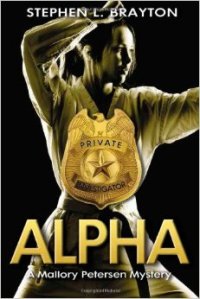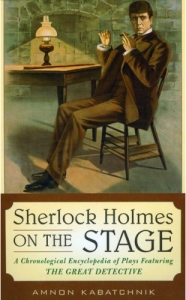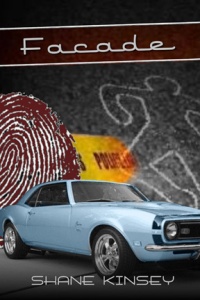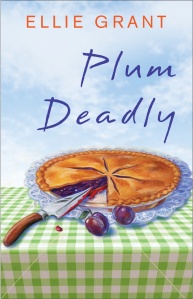
Eyre Price
Today, it’s my pleasure to interview Eyre Price, author of the Crossroads thriller series and Killer Nashville Success Story. So, Eyre, when did you know you wanted to be a writer?
I’ve absolutely always wanted to be a writer. It was a selection made easier by the fact that I’m not very good at anything else. I was never a good athlete or student. I’ve certainly never been blessed with the social skills. But I’ve always had a certain talent for telling a story.
So my earliest memories are really of being alone in my room scribbling down stories and making up characters and forty-some years later I’m still at it.
What drew you to crime fiction?
It’s funny, but I don’t think of myself as “crime fiction” writer. That doesn’t mean that I’m not grateful for the success that both Blues Highway Blues and Rock Island Rock have had on the Kindle Crime List, because I am. I just think that genres of any nature are by definition limiting.
So while there’s certainly a lot of criminal activity that goes down in the Crossroads series (and a lot more to come) I just don’t think of it as being a book about crime. There’s a significant supernatural element woven in there as well. They’re essentially the literary equivalent of “road movies” or “buddy movies.” And there’s also a take on music, some romance, and maybe some not-so-subtle social commentary. So, all in all, I just think there’s a lot more going on between the covers than just crime. And I think that’s true of most books.
More than that, I just don’t think of Daniel Erickson, the main character in the series, as being a criminal. He’s really just an everyman who has pushed too far. As he likes to say “I’m tired of being pushed around, now I’m a push back man.”
So the intention isn’t necessarily criminal, but I suppose the results are. Still, I think that’s something that many people can understand, if not sympathize with. I think there are a lot of criminals out there just smoldering beneath the social fronts we put on for one another.
You mentioned the limitations of genre, so I’m assuming you’ve had a wide variety of literary influences. Can you name a few for us?
Geoffrey Household’s Rogue Male was the first book that really opened my eyes to what a writer could do to a reader.
Steinbeck’s Grapes of Wrath had a profound effect on me for a number of reasons. Not only is it arguably the greatest novel of the Twentieth Century (I can’t imagine what its competition would be), but it achieves that masterful effect by breaking almost every one of the “rules” that too many “writing teachers/experts/coaches” want to slap on writing today.
What comes first to mind is a chapter in which a pair of truckers spring to buy candy sticks for the Joad kids. By today’s standards, I think many critics would say the scene is too emotional and doesn’t advance the plot. But it’s an incredibly touching chapter and once you’ve read it, it’s with you forever. So I love the fact that the greatest novel of the twentieth century maybe couldn’t be published today and certainly would suffer some withering reviews.
Last but not least, Robert Parker’s Spenser books were blueprints for a lot of what I’m writing today. I love Parker’s simple and confident style.
But unlike Household, Steinbeck, or Parker, I grew up as a part of a generation for whom books weren’t the main cultural influence. So looking beyond the strictly “literary” influences: Syndney Pollack’s The Three Days of the Condor was (and is) extraordinarily important to me as a storyteller. And Stephen J. Cannell’s The Rockford Files was the strongest artistic influence for me. Everything I write (whether I want it to or not) has Rockford at its heart.
The Rockford reference is interesting, because, while Rockford got drawn into dangerous situations every week, I always felt like he would have preferred to avoid them if he could. You’re not a violent man at all, and although your writing is very literary, there’s a lot of violence in your books. How do you manage to blend the often violent events with the deeper themes you explore in your series?
I’m not a violent man, but I recognize that I’ve been fortunate to live a very lucky life. The people I write about aren’t necessarily violent people, but people who find themselves in violent circumstances. And I think there are a lot of people who live quiet, comfortable, and peaceful lives, but still recognize that if push ever came to shove they’d come out swinging.
Also, while I’ve certainly gotten my share of criticism for the level of violence in my books, I’ve never been intentionally exploitive. Still, at the same time I don’t want my readers to get off easy either. Violence is a horrible thing—arguably, a necessity sometimes—but always a horrible thing. I want my readers to feel that. In writing a violent scene, I’ve failed if it becomes so gratuitous that the reader drops out, but I’ve failed just as badly if my readers are comfortable with it. I think a reader should come away from the page with the same sort of reaction they’d have if they’d witnessed the act in real life.
From reading the Crossroads series, I’d say you succeed at that. What else do you hope readers take away from your books?
I had a gentleman from the UK write me to tell me that he’d been a life-long blues fan who’d always wanted to visit the Delta and Blues Highway Blues was his tipping point. He read my book and then booked a vacation to the Delta. So that experience already fulfills any expectations I had for readers’ experiences.
Beyond that, I write stories that I hope are going to entertain people. I think the Crossroad series is an exciting way to spend a summer day (or night) and I’m good with that. At the same time, if people come away from the books with a better of understanding and appreciation for the forgotten men and women who laid the foundations for the music that is popular today, that’s make me smile too.
Your books explore a lot of moral dilemmas and the consequences of one’s choices, so it doesn’t come as a surprise to learn that you were an attorney before you were a professional writer. What made you decide to pursue writing as a career and give up the legal profession?
I’m fortunate enough to have a wonderful wife who made it possible for me to give up the legal profession to stay at home with my son. Best decision of my life.
That being said, taking care of our son (including home school) has really become my career. My writing day doesn’t start until my day with him is done (usually 9:00 or 10:00pm) and it goes on through the night (usually 3:00 or 4:00 am). So there are times when I envy those who have writing as their sole pursuit, but for the time being I wouldn’t change anything about my day job. Or my moonlighting position.
How long did you work at it before you came up with what you felt was a publishable work?
I’ve been submitting manuscripts (and collecting rejection slips) for probably twenty five years.
The twist for me is that when I wasn’t published, I thought everything I’d written was worthy of publication and now that I’ve crossed the publication threshold I really worry about whether each and every new project is good enough to meet those standards.

“Rock Island Rock” by Eyre Price
Once you had a manuscript you thought was publishable, how long did you try to find an agent and/or publisher before you finally found one?
I’ve had a number of agents over the course of my long road to publication. The experiences taught me that getting/having an agent is an aspect of the business that is too often misunderstood. When I was first looking I just wanted an agent. I wasn’t as particular as I should have been and it resulted in a lot of bad relationships that cost me time and opportunities, ultimately setting me back more years than I want to think about.
A writer and an agent have to have a working relationship in order for the partnership to be beneficial. So my best advice to anyone looking for an agent is to be patient and wait for the “right” one.
And now you’re a full-time author just turning in your third book. How does that feel? Is it everything you’d hoped for?
It’s one of those “be careful what you wish for scenarios.” Publication is certainly the fulfillment of a life-long dream and I wouldn’t change a thing about the experience–but it’s a very demanding experience.
How did Killer Nashville help you launch your career? (You knew I was getting to that eventually!) You entered the Claymore, had pitches with several agents, and met Jill at dinner, so maybe touch on all of those, or whatever you feel is important.
First and foremost, I will say that Killer Nashville was absolutely the launching pad of my career and I cannot imagine the circumstances that would have led to me being a published author today if it had not been for my involvement with KN. But what Killer Nashville taught me, more than anything else, was to concentrate on the work and keep moving forward.
I did enter the Claymore…and was a runner-up.
I had pitches with several agents and publishers…all of whom passed on me.
You did set up a dinner with Jill…and she decided to stay at the bar with friends instead. (I ended up pitching Jill at one of those five minute speed sessions while on my knees because I had Dylan sit in the chair.)
I went to that dinner and met Sunny Frazier of Oaktree Press instead. She assured me my future was great…and then told me in an e-mail that she thought my writing “would be stronger.”
On my way to KN two years ago, my agent and I thought we had a deal in the bag with one of the Big Six…that completely fell apart that following week.
So there were a lot of disappointments there too, but this is a business of disappointments. The Killer Nashville community was so supportive, that it was easier to keep writing and just keep moving forward. And that is the only true secret to success in writing: just keep writing.
What advice would you give aspiring writers?
Here’s the secret to writing success:
1.) Write. Every day. Whether you want to or not. Write.
2.) Set up a social media platform/internet presence: web site, Facebook, Twitter, blog…
3.) Go to Killer Nashville. Be social. Be nice. Make friends. Be good to your friends.
4.) Write.
5.) Research the industry. Understand what it is and how its changing.
6.) Write.
7.) Write some more.
8.) Cultivate your friendships and make contacts.
9.) Do everything you can to help those around you.
10.) No matter what happens…just keep writing.
How can Killer Nashville help aspiring and published writers?
Killer Nashville provides a unique opportunity for aspiring writers. First, there’s an opportunity to meet other aspiring writers. Lots of people tend to dismiss or overlook writers who don’t have a contract in place, but that’s a huge mistake. There’s something that can be learned from everyone. (And keep in mind that everyone was an aspiring writer at the beginning of their career.) There’s also an unparalleled opportunity to meet agents and publishers.
Published writers find an opportunity to meet other writers (including aspiring writers). There also an incredibly receptive audience there for promoting projects and really significant press coverage—can you say, Library Police—that can be instrumental in getting your name out there.
All in all, I really don’t believe there is a better conference out there for writers who are approaching literary conferences as a means of advancing their careers in real and practical ways.
Eyre Price was raised in Northeastern Pennsylvania. Price was an attorney for more than fifteen years before leaving the practice of law to become a stay-at-home dad. An avid fan of all genres of American music, his Crossroads thrillers, Blues Highway Blues and Rock Island Rock, have received critical acclaim. Price has been featured in Writers Digest and was a 2009 finalist for Killer Nashville’s Claymore Award. See more of Eyre Price at http://www.eyreprice.net/
(The Killer Nashville Guest Blog series is coordinated by KN Executive Director Beth Terrell (http://www.elizabethterrell.com/). To be a part of this series, contact Beth at beth@killernashville.com.)








































 You have that wonderful jazzy computer, and you have great ideas. Here’s something I forget to do: take time to lay out some rough idea of where you want the book, or article, or poem to go. (It sounds boring, uncreative…and changes as you go along, but it will save you more time/hair-pulling/discouragement down the line. This took me a long time to learn.)
You have that wonderful jazzy computer, and you have great ideas. Here’s something I forget to do: take time to lay out some rough idea of where you want the book, or article, or poem to go. (It sounds boring, uncreative…and changes as you go along, but it will save you more time/hair-pulling/discouragement down the line. This took me a long time to learn.) DEATH NELL
DEATH NELL




















































Critiques Are A Two-Edged Sword / Author Maggie Toussaint
Author Maggie Toussaint
Authors are polarized on the subject of critiques. For some, the idea of anyone criticizing any part of their baby is unthinkable. Other authors wouldn’t dream of turning in a manuscript unless it had been vetted by critique partners.
So let’s get that out of the way right up front. Critiquing isn’t for everyone, and that’s okay.
What is critique? It’s evaluating a theory or practice in a logical or analytical way. That makes it sound like there’s one right way to do something. But when it comes to writing, nothing could be farther from the truth.
Writers come from all walks of life and embrace many styles of writing. Their advice varies in helpfulness. Their analysis is shaded by their experiences, likes, dislikes, emotions, and other intangibles .
If you understand that critique is an analysis shaded by opinion, you’re better prepared to evaluate the feedback you receive. That’s right. Getting a critique is only 50 percent of the work. Evaluating the feedback is just as important.
Here are guidelines that helped me along my critiquing journey:
If you offer a critique, remember these tips. Point out weak areas in a kind way. Give positive feedback on things done well. Mark the sections where you had strong emotional responses. Resist the urge to rewrite extensively in your own words – this isn’t your story. If something isn’t working in the submission, try to identify the root cause. If you can’t identify the cause, describe the effect it had on you. (For instance a book with too much backstory might drag.)
My experience has shown that there are at least three levels of critiques, and I break them down by how far along in the writing process the project is.
For first drafts: analyze big picture stuff (do plot events happen in an understandable progression, is the main character(s) established, is there setting), voice; mood, other story intangibles (if a work has “story” it shines through even the worst writing); and genre appropriateness. NOTE: only do line edits at this point if the person asking for critique wants them.
Hot Water
For drafts in revision: check that all of the above are fine-tuned by making sure the transitions between scene and sequel are present, check for dangling story threads, check for consistent characterization, look to see if setting is experienced instead of told, check for pacing by evaluating dialog to narrative blend; check for gender differences in POV; check for story hooks at start and end of scenes, as well as larger hooks at the end of chapters; check grammar, spelling, and do line edits once the other stuff is up to a professional level.
For final drafts: keeping in mind all of the above, read for flow, for voice, for consistency, for places where the book drags or moves too fast for the scene content, note spelling errors.
Lastly, writers must be capable of evaluating if the critique input stays true to their story vision. Many people get discouraged about critique because they are unable to process the input. If someone told you that crayons were currency, would you believe them? No? Why not? Because you know better.
Just as you know best when it comes to your story. Evaluate each comment. Does it improve the story? Does it detract from your voice? Make sure you’re not having a kneejerk response to the comments. Sometimes it helps to let the critique sit a day or two before you edit the comments into your work.
It all comes back to the writer. She/he must take responsibility for writing – and for rewriting.
Maggie Toussaint
Formerly an aquatic toxicologist contracted to the U.S. Army and currently a freelance reporter, Southern author Maggie Toussaint loves to blend murder and romance in her fiction. With ten published books to her credit, her latest releases are Hot Water (romantic suspense) and Dime If I Know (mystery). She’s an active member of Mystery Writers of America, Romance Writers of America, and Sisters In Crime. Visit her at www.maggietoussaint.com.
(The Killer Nashville Guest Blog series is coordinated by KN Executive Director Beth Terrell (http://www.elizabethterrell.com/). To be a part of this series, contact Beth at beth@killernashville.com.)
Share this: